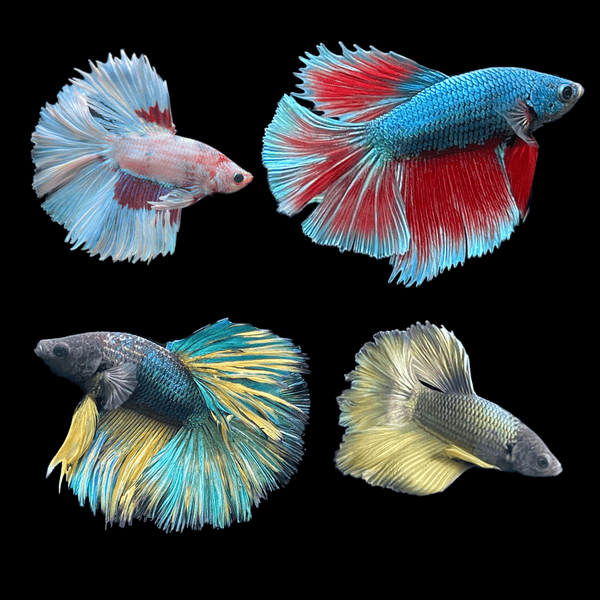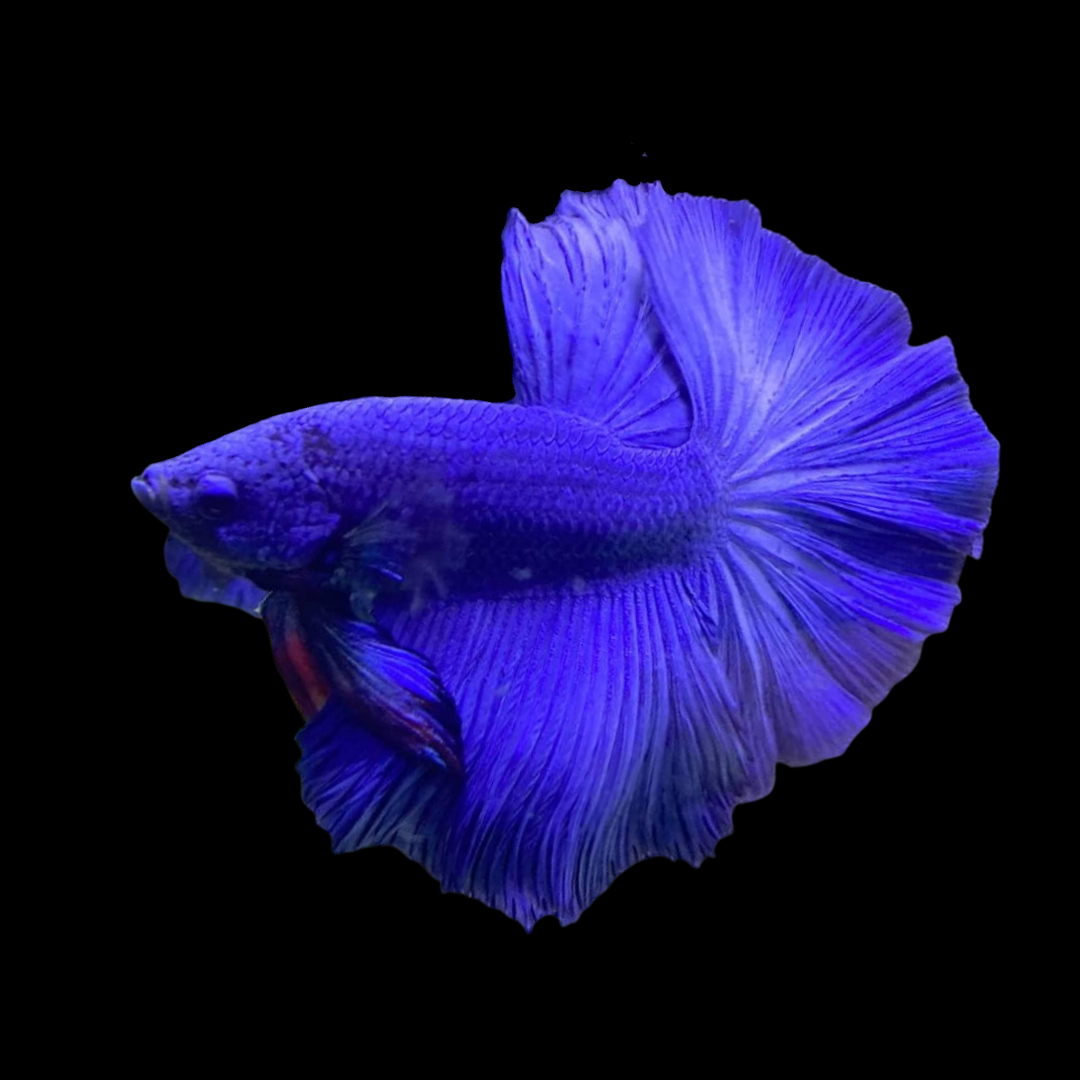Just how to Choose the Right Betta Fish for Your Aquarium
Just how to Choose the Right Betta Fish for Your Aquarium
Blog Article
Breeding Betta Fish: a Comprehensive Step-By-Step Guide to Effectively Raising Baby Bettas From Eggs to The Adult Years
Reproducing Betta fish is a meticulous endeavor that calls for mindful planning and implementation to make sure the successful advancement of fry from eggs to develop fish. Picking genetically varied breeding sets with preferable attributes is just the beginning; developing an optimal atmosphere and understanding the ins and outs of the reproducing procedure are just as critical. As the male Betta diligently constructs a bubble nest and guards the valuable eggs, the subsequent phases of care and change demand interest to detail and expertise of best practices. Just how does one browse the challenging yet fulfilling path of supporting these dynamic animals to adulthood?

Selecting Breeding Pairs
When starting the journey of breeding Betta fish, picking the right reproduction sets is important to attaining preferable characteristics and a healthy and balanced lineage - betta fish. The primary step in this process is to identify the certain attributes you desire to enhance or maintain, such as color, fin type, and body form. It is vital to pick genetically varied pairs to avoid inbreeding, which can cause health concerns and undesirable qualities
Examine possible reproducing candidates thoroughly. A healthy male Betta must display vivid shades, an energetic behavior, and well-formed fins, while the woman ought to also present dynamic pigmentation and a rounded belly, suggesting preparedness for spawning. Observing the temperament of both fish is important, as aggressive or overly timid people may not reproduce effectively.
Keeping records of the moms and dad fish's origins can help you track hereditary characteristics and prospective problems. Ultimately, spending time in the option procedure will considerably improve the probability of creating strong, vivid children that meet your reproduction objectives.

Preparing the Breeding Storage Tank
Producing an ideal breeding setting is a vital step after selecting appropriate sets for Betta fish. The breeding tank need to be specifically created to offer convenience and stimulate the all-natural reproduction habits of the fish. Begin with a container size of at least 10 gallons to guarantee sufficient area for both the male and women Bettas.
Keep a gentle purification system to maintain the water tidy while avoiding strong currents that can stress the fish. Furthermore, an air stone can be contributed to supply oxygenation without interfering with the water surface excessive.
Temperature policy is vital; objective for a steady variety of 78-82 ° F(25-28 ° C) making use of a trustworthy heating unit. The pH degree should be preserved between 6.5 and 7.5, and normal water modifications are essential to make sure high water high quality.
Integrate floating plants or spawning sponges to create hiding places for the female, while also urging bubble nest building by the man - betta fish. Make certain the tank is free from sharp designs and any prospective risks, as the welfare of the fish ought to always be prioritized during this critical phase of reproduction.
The Breeding Refine
Normally, the breeding process for Betta fish involves a collection of distinct and evident actions that suggest readiness for recreation. The male Betta starts by constructing a bubble nest at the water's surface, which serves as a site for the fed eggs. This nest is critical, as it gives a secure atmosphere for the eggs until they hatch out.
Once the nest is established, the male will certainly display courtship habits, such as flaring his fins and showing vivid shades to bring in the female. The lady, upon noticing the man's readiness, will react by displaying upright stripes along her body, signaling her receptiveness.
When the female techniques, the male takes part in a breeding dance, commonly causing an accept known as the "spawning." Throughout this accept, the woman releases her eggs, which the male feeds immediately. The fertilized eggs after that fall to the bubble nest, where the male very carefully gathers and returns them to the nest. Following this, the male assumes duty for safeguarding the nest and guaranteeing the safety and security of the eggs up until they hatch, normally within 24-36 hours. This stage is crucial in the reproducing process, laying browse this site the foundation for effective fry advancement.
Caring for Betta Fry
Caring for Betta fry calls for careful focus to visit site their atmosphere and nourishment to ensure healthy and balanced growth and advancement. After hatching out, Betta fry are extremely little and at risk, demanding a steady and tidy habitat. Preserving a water temperature in between 78 ° F and 80 ° F is crucial, as Betta fry thrive in cozy conditions. Additionally, guarantee that the water is devoid of dangerous toxins; normal water modifications of 10-20% are suggested to preserve optimum water high quality.
Feeding Betta fry is similarly essential. Feed them small amounts a number of times a day, being careful not to overfeed, which can lead to water quality concerns.
Transitioning to Grownup Bettas
As Betta fry fully grown, transitioning them to adult Bettas is an important phase that requires careful management of their setting and social communications. This process usually begins when the fry get to around 6 weeks of age, whereupon they can be progressively presented to a much more structured living setting.
To promote this shift, it is necessary to ensure that the water criteria-- such as temperature, pH, and ammonia degrees-- are optimal and steady. Adult Betta fish prosper in warm water (around 78-80 ° F) with a pH of 6.5 to 7.5. Progressively accustom the fry to these problems to reduce stress and anxiety.
Social interactions are an additional essential look at here variable; male Bettas are infamously territorial and aggressive. It is suggested to different men into individual storage tanks as they mature. Female Bettas can be housed with each other, yet care ought to be taken to keep an eye on for signs of hostility.
In addition, dietary changes should be made as the fry grow. Include premium pellets and live foods to sustain their growth and wellness. By handling these elements effectively, you can advertise an effective shift to their adult years for your Betta fish.

Conclusion
Successful reproduction of Betta fish calls for mindful focus to information throughout the whole process, from selecting genetically diverse pairs to providing ideal care for fry. Furthermore, a balanced diet regimen and gradual adjustment to adult settings are critical for the growth and advancement of Betta fish.
Report this page